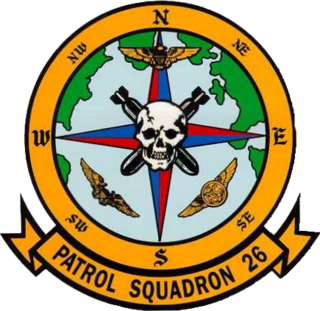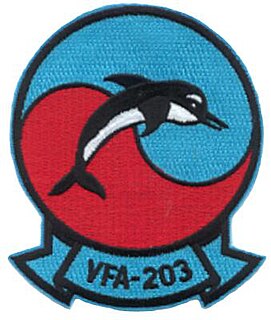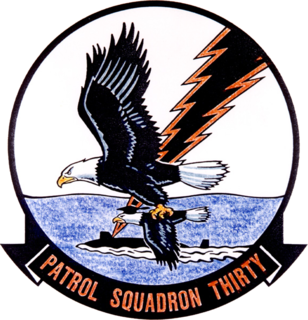Panama City–Bay County International Airport was a public airport 3 miles (4.8 km) northwest of Panama City, in Bay County, Florida. It was owned and operated by the Panama City–Bay County Airport and Industrial District. All airline services moved to the Northwest Florida Beaches International Airport on May 22, 2010, but the airfield was open to general aviation aircraft until October 1, 2010. The grounds will eventually be turned over to LUK-MB1 LLC, which plans to remove the runways and build homes, shops, walking trails and a marina.

Tallahassee International Airport is a city-owned airport five miles southwest of downtown Tallahassee, in Leon County, Florida. It serves the state capital of Florida, and its surrounding areas; it is one of the major airports in north Florida, the others being Pensacola International Airport, Northwest Florida Beaches International Airport, and Jacksonville International Airport. Despite its name, it does not yet service any international destinations.
Jacksonville Executive at Craig Airport, formerly known as Craig Municipal Airport, is a public airport located eight miles (13 km) east of the central business district of Jacksonville, in Duval County, Florida, United States. It is owned by the Jacksonville Aviation Authority.

Naval Air Station Jacksonville is a large naval air station located approximately eight miles (13 km) south of the central business district of Jacksonville, Florida, United States.

Naval Air Station Oceana or NAS Oceana is a United States Navy Naval Air Station located in Virginia Beach, Virginia. The base is under the jurisdiction of Navy Region Mid-Atlantic and is the headquarters of Strike Fighter Wing Atlantic and Carrier Air Wings 1, 3, 7 and 8. As home to all east coast strike fighter jet squadrons, the Naval Air Station is classified as a master jet base. The airfield is known as Apollo Soucek Field, named after Lieutenant Apollo Soucek, a Navy Test Pilot who set the global altitude record in 1930 by flying a Curtiss "Hawk" biplane to an altitude of 43,166 feet.

Lakeland Linder International Airport is a public airport five miles southwest of Lakeland, in Polk County, Florida. The Federal Aviation Administration (FAA) National Plan of Integrated Airport Systems for 2017–2021 categorized it as a national reliever facility for Tampa International Airport. The airport has a Class 1 Federal Aviation Regulation (FAR) Part 139 operating certificate allowing passenger airline flights.

Naval Air Station Cecil Field or NAS Cecil Field was a United States Navy air base, located in Duval County, Florida. Prior to October 1999, NAS Cecil Field was the largest military base in terms of acreage in the Jacksonville, Florida area.
Cecil Airport is a public airport and commercial spaceport located in Jacksonville, Florida, United States. The airport is owned by the Jacksonville Aviation Authority and services military aircraft, corporate aircraft, general aviation, and air cargo. The Florida Army National Guard's primary Army Aviation Support Facility and the U.S. Coast Guard's Helicopter Interdiction Tactical Squadron (HITRON) are also located here, the former operating CH-47 Chinook, UH-60 Blackhawk, UH-72 Lakota and C-12 Huron aircraft, and the latter operating the MH-65C Dolphin helicopter.

Lake City Gateway Airport is a city-owned, public-use airport located three nautical miles (6 km) east of the central business district of Lake City, in Columbia County, Florida, United States. Formerly known as Lake City Municipal Airport, it is included in the National Plan of Integrated Airport Systems for 2011–2015, which categorized it as a general aviation facility.
Fernandina Beach Municipal Airport is a city-owned public-use airport located on Amelia Island three nautical miles (6 km) south of the central business district of Fernandina Beach, a city in Nassau County, Florida, United States. It is designated as a reliever airport for Jacksonville International Airport.

Naval Air Station Glynco, Georgia, was an operational naval air station from 1942 to 1974 with an FAA airfield identifier of NEA and an ICAO identifier of KNEA.
The Jacksonville Aviation Authority (JAA) is the independent government agency that owns and operates the four airports of Jacksonville, Florida, US. It was established in 2001 after being branched off of the Jacksonville Port Authority.

The VP-26 Tridents are a United States Navy aircraft squadron based at Naval Air Station Jacksonville in Florida. The squadron flies Boeing P-8A patrol aircraft. It was established as Bombing Squadron 114 (VB-114) on 26 August 1943 and renamed Patrol Bombing Squadron 114 (VPB-114) on 1 October 1944; Patrol Squadron 114 (VP-114) on 15 May 1946; Heavy Patrol Squadron (Landplane) 6 (VP-HL-6) on 15 November 1946, and Patrol Squadron 26 (VP-26) on 1 September 1948. The Tridents are the third squadron to be designated VP-26; the first VP-26 was renamed VP-102 on 16 December 1940, and the second VP-26 was renamed VP-14 on 1 July 1941.

Imeson Field, also known as Jacksonville Imeson Airport, was the airport serving Jacksonville, Florida, from 1927 until its closing in 1968. It was known as Jacksonville Municipal Airport prior to World War II, Jacksonville Army Airfield when the United States Army Air Forces controlled the facility during World War II, and at its closing the airport was Jacksonville – Thomas Cole Imeson Municipal Airport.
The Cecil Recreation Complex at the Cecil Commerce Center is a comprehensive recreational facility on the west side of Jacksonville, Florida. The $25 million project was part of the 2000 Better Jacksonville Plan and will eventually include 1,500 acres (6.1 km2). The City of Jacksonville, Parks and Recreation department manages the facilities.

The Jacksonville transportation network includes ground, air, and sea options for passenger and freight transit. The Jacksonville Port Authority (Jaxport) operates the Port of Jacksonville, which includes container shipping facilities at Blount Island Marine Terminal, the Talleyrand Marine Terminal and the Dames Point Marine Terminal. Jacksonville Aviation Authority managers Jacksonville International Airport in Northside, as well as several smaller airports. The Jacksonville Transportation Authority (JTA) operates bus, people mover, and park-n-ride services throughout the city and region. A major bus terminal at the intermodal Rosa Parks Transit Station serves as JTA's main transit hub. Various intercity bus companies terminate near Central Station. Amtrak operates passenger rail service to and from major cities throughout North America. The city is bisected by major highways, I-95 and I-10, I-295 creates a full beltway around the city.

VFA-203, nicknamed the Blue Dolphins, was a Strike Fighter Squadron of the U.S. Naval Reserve. It was established as Attack Squadron 203 (VA-203) flying the A-4 Skyhawk at NAS Jacksonville, Florida on 1 July 1970, as a reserve force squadron (RESFORON) under a new concept in the reorganization of the Naval Air Reserve Force. The reorganization was intended to make the reserves more compatible with active duty units and to increase their combat readiness. It was deactivated on 30 June 2004.

Patrol Squadron 30 (VP-30) is a maritime patrol squadron of the United States Navy, established on 30 June 1960. It is based at Naval Air Station Jacksonville, Florida United States.

Sea Control Squadron 24 (VS-24) was a squadron of the United States Navy. Originally established as VB-17 on 1 January 1943, it was redesignated as VA-5B on 15 November 1946, redesignated as VA-64 on 27 July 1948, redesignated as VC-24 on 8 April 1949 and redesignated as VS-24 on 20 April 1950, it was disestablished on 1 June 1956. It was however reestablished again before being decommissioned in 2007.













